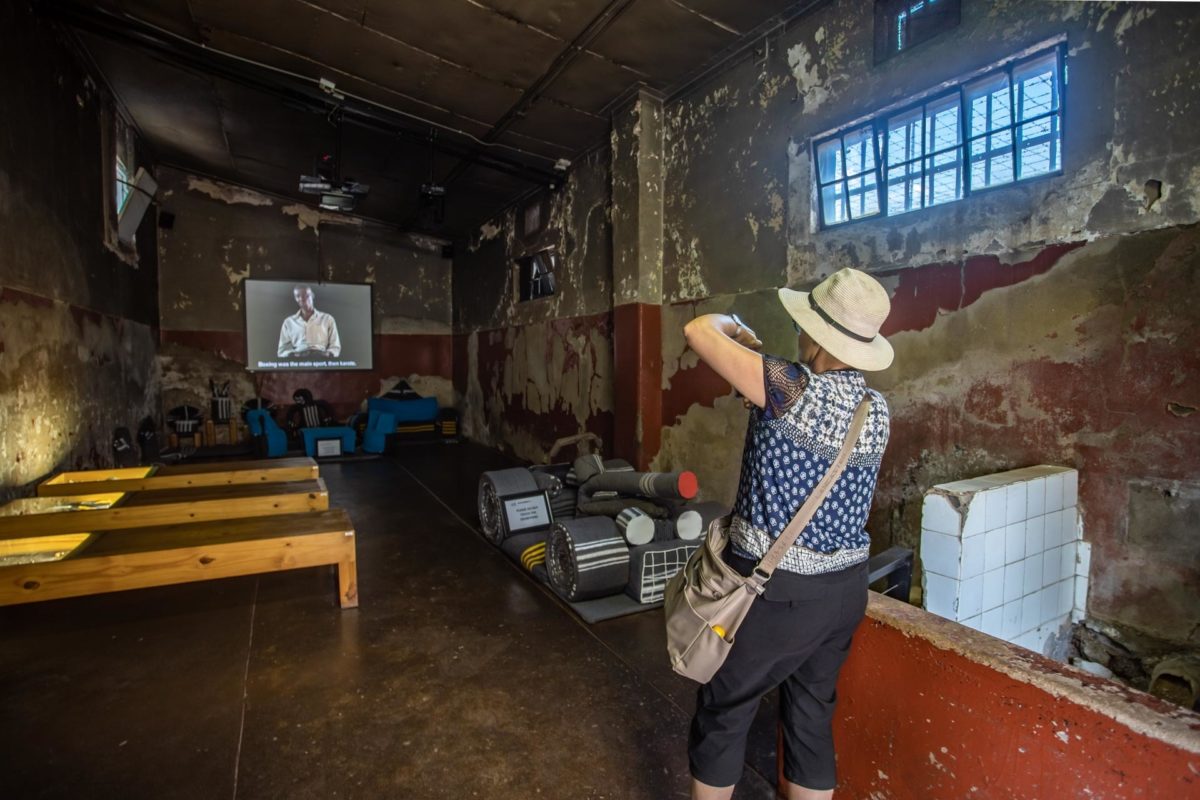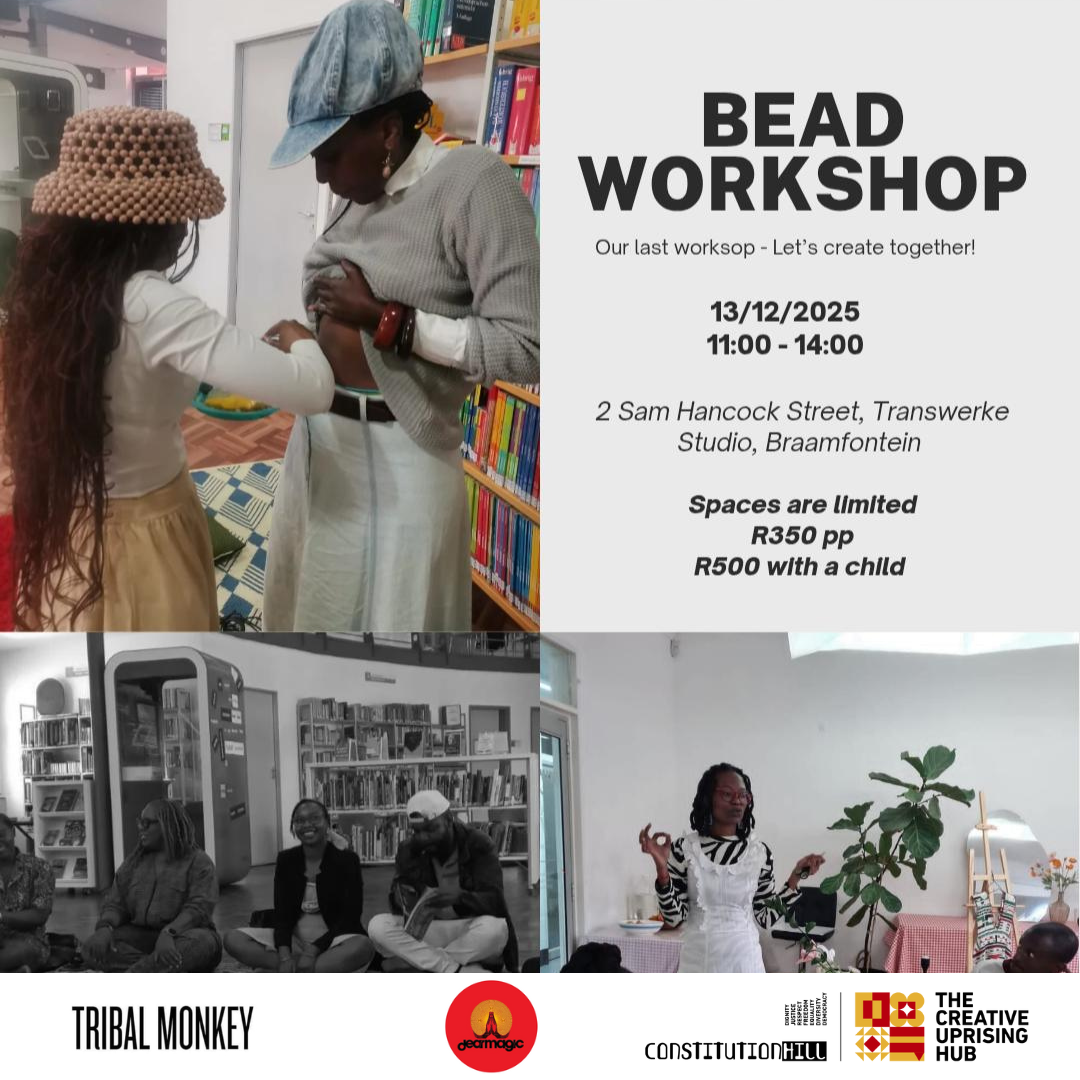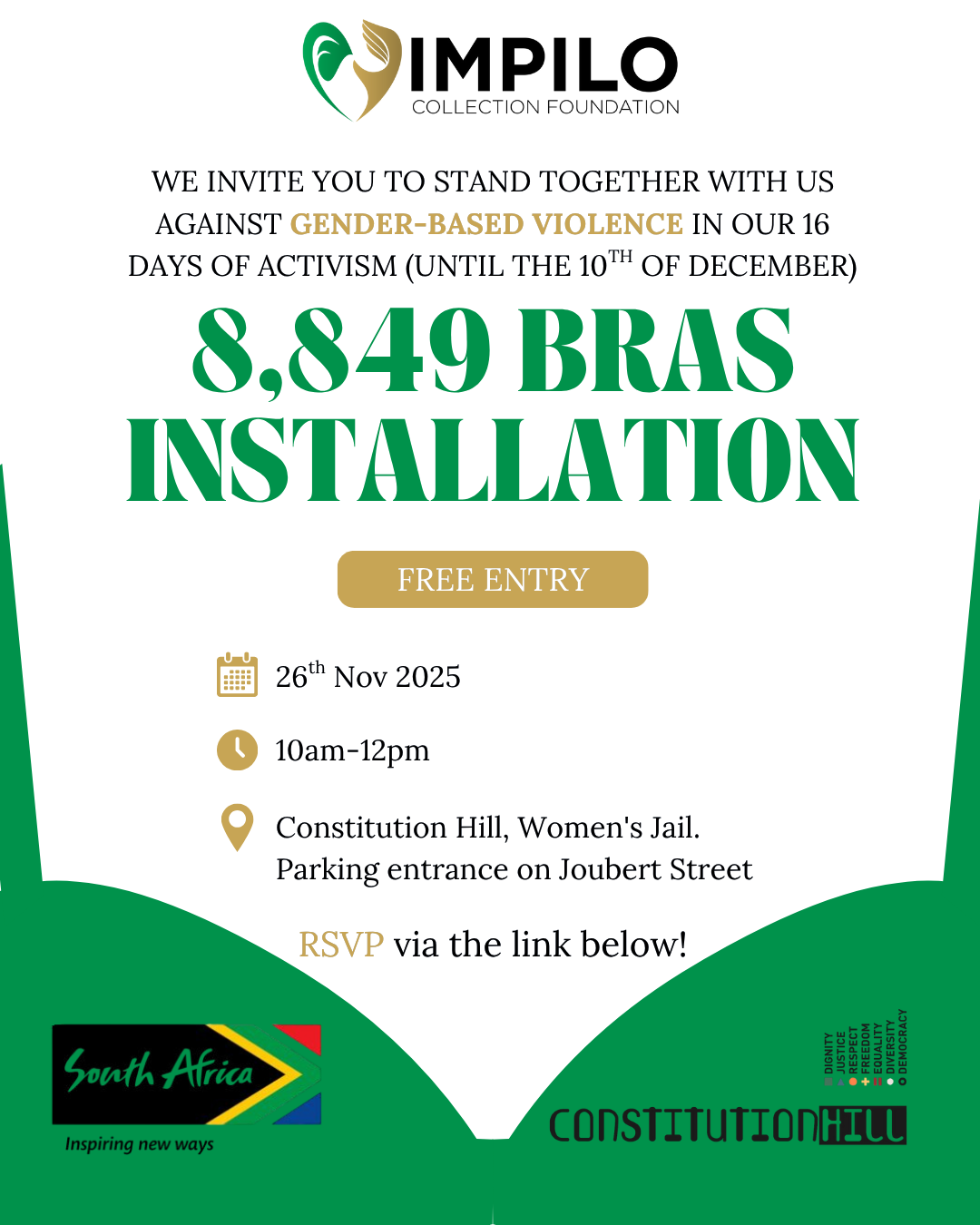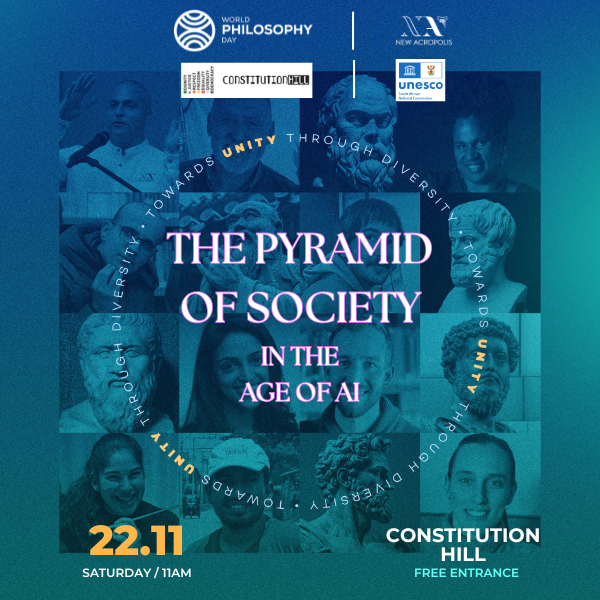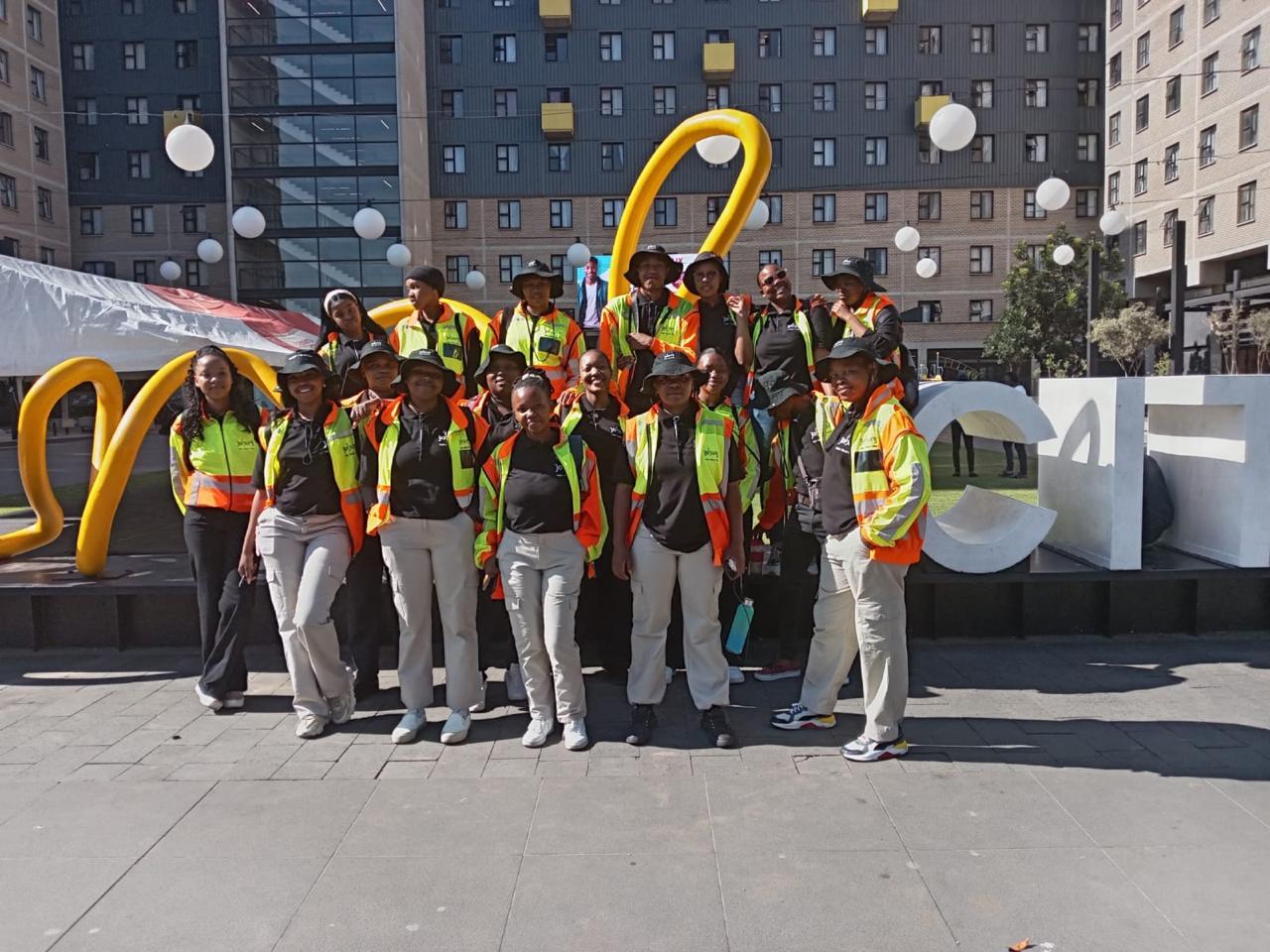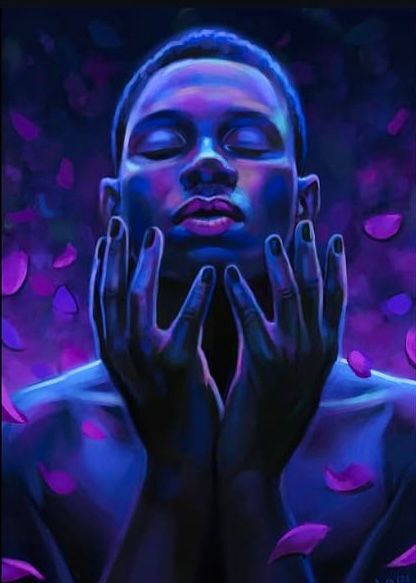
Multidisciplinary artist Jenny Nijenhuis explores the shadow pandemic in her latest installation titled Resonance. Resonance is a site-specific installation bound in the atrium of the Women’s prison on Constitution Hill.
Consisting of a handmade white dress stitched with red thread, Resonance contemplates the escalation in gender-based violence (GBV) in South Africa as it intensified during Covid 19 lockdowns. The installation is a reflection on the pain and anger informing expressions of masculinity with its underbelly of violence and brings awareness to what became known as the shadow pandemic during which 90 countries were in hard lockdown in April 2020.
Four billion of the world’s 7.8 billion people sheltered at home to protect against Covid-19, while behind closed doors the increase in reported violence in South Africa, specifically sexual violence with an intimate partner, saw the growth of the shadow pandemic.
A global estimate stated that projections showed that if violence increased by 20 per cent during periods of lockdown, we could anticipate an additional 15 million cases of intimate partner violence in 2020 for an average lockdown duration of 3 months at that time. Lifeline SA chief executive Molefi Takalo said that the number of GBV distress calls shot up from 12 000 to almost 80 000 following the first week of lockdown.
This highlights the intensity with which negative emotions like anger or fear lead to aggression and violence which is most often inflicted on loved ones.
Violence and gender-based violence are an epidemic in South Africa and Nijenhuis believes boys and men learn to behave violently through what they were taught as children, their social environment and how these things are processed. Violence is very likely caused by social conditioning which results in children becoming violent adults.
Bound and tied onsite, the installation explores interconnectedness and how we remain caught in cycles of violence.
Jung establishes that we all fall into categories, or archetypes. Pre-set templates of how we will behave during our lifetime. Nijenhuis explains that these pre-sets are unconscious in that we adopt them without knowing and mostly because of conditioning and circumstance – life as it were. Referred to as the collective unconscious, Jung suggests that we are all connected by the characterisation of our behaviours into these groups.
Two primary and distinct polarities of the collective unconscious are the masculine and feminine, the two exist in synchronous relationship reflective of each other and keep each other trapped in binary opposition. It is like an eternal dance which evolves and shifts - one in relation to the other.

The use of red thread in the installation creates a web of lines - traversing, connecting, binding, and entwining all of humanity to each other. Every story told and untold is not random, but a rich weaving of one to the other in the endless formation of scarlet embroidery which we weave ourselves.
Nijenhuis says that at the core of all faith is an inherent belief in unconditional love, yet as children and as adults, we no longer know how to give, show or even how to allow ourselves to feel unconditional love. This is to the point where our current life experience is so fearful that violence, hate and disconnect form our reality. Even our religions come from this place.
In physics resonance describes how different things in proximity start to vibrate together at the same frequency. This is known as the phenomenon of spontaneous self-organization, and examining it provides potentially deep insight into the nature of consciousness and existence.
Nijenhuis believes that if we consider collective human consciousness from this perspective, we can shift it - how it manifests; the frequency at which it vibrates; and ultimately how our reality is experienced.
Nijenhuis suggests that we have it within us to change the state of the world and human consciousness one person at a time through intentional resonance connections. Like an invisible scarlet thread.
The Women’s prison on Constitution Hill as the site for this installation has been specifically chosen since women have been imprisoned here for protecting their rights to life, their families, to have liberty and equality. Now, as home to South Africa’s Constitutional Court, the site plays a significant role in endorsing human rights and has a long history reflective of South Africa’s past.
Resonance is open to the public for viewing in the Atrium of the Women’s Prison on Constitution Hill between 1 to 28 August 2022 with a launch event on Saturday 6 August at 11h00.

Jenny Nijenhuisa
Jenny Nijenhuis was born in Johannesburg, South Africa and obtained her BAFA from the University of the Witwatersrand.
Having worked in corporate marketing and running her own communications agency until 2018, she returned to her art practice part-time in 2012 working in sculpture and installation. Years spent in communications combined with an on-going drive to understand human identity and how this is influenced by religious, political, and societal dogma, has led to her current artistic exploration.
Nijenhuis was invited to Cornell University in New York in 2019 to present the Keynote address at an event on the empowerment of women around the world. Nijenhuis is a finalist in the 2017 Sasol New Signatures art competition.
In 2016 Nijenhuis created SA’s Dirty Laundry, an installation bringing awareness to the issue of rape in South Africa by hanging 3600 pairs of used panties on washing lines across the streets of Johannesburg. In 2015 Nijenhuis was a PPC Imaginarium finalist and a Lovell Tranyr Art Trophy finalist in 2014.

 +27 11 381 3100
+27 11 381 3100
